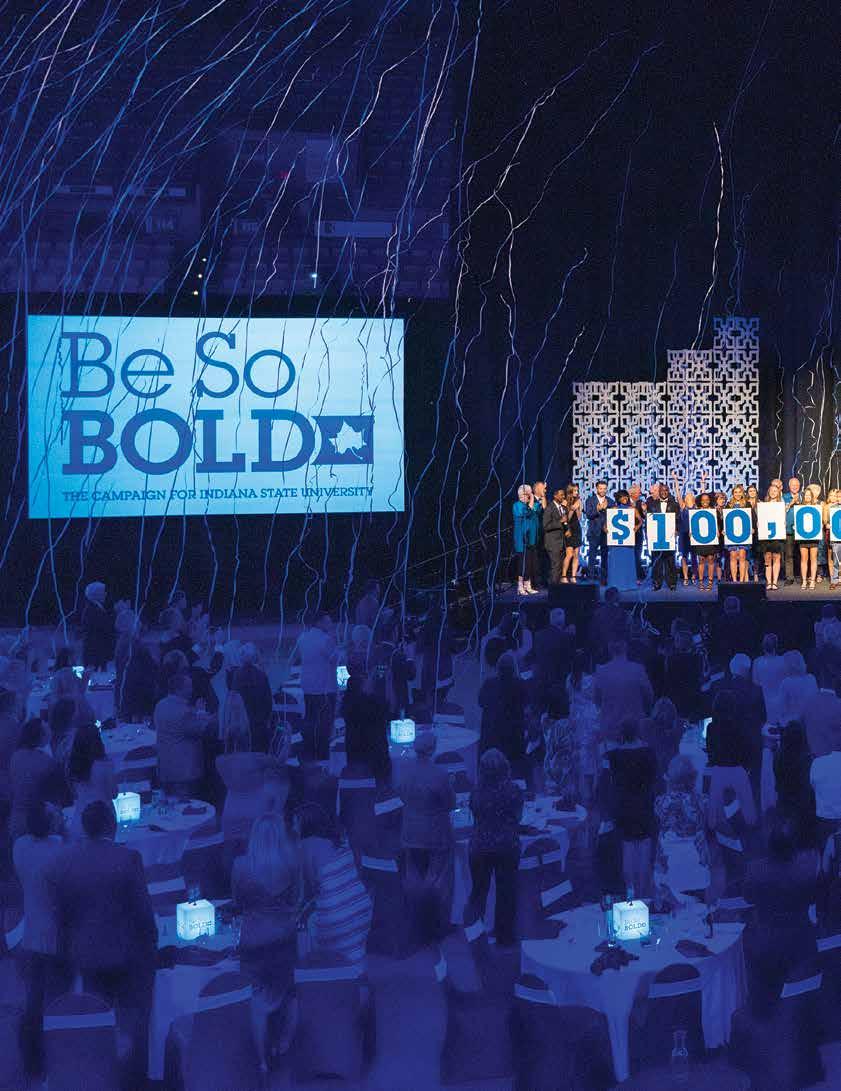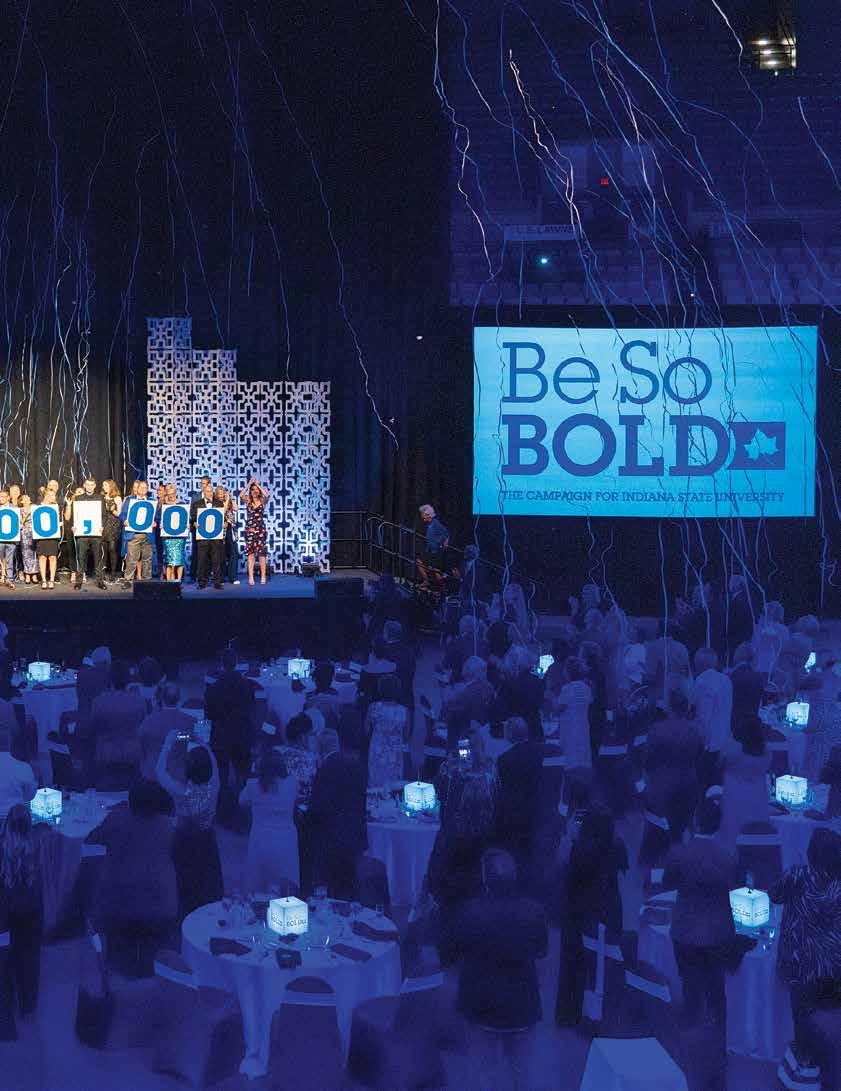
6 minute read
NEW BOOK ON ISU’S HISTORY Associate Professor Dan Clark examines university’s first 70 years
New book chronicles ISU’s rise in its first 70 years
Advertisement
BY MARK ALESIA
While writing the history of Indiana State University, Dan Clark deviated from the genre’s norms.
“The usual institutional history in American higher education is always written with a view from the presidential office or the faculty, with little attention paid to student life,” said Clark, an associate professor of history at ISU.
That is not the case in “A History of Indiana State University: From Normal School to Teachers College, 1865-1933.” It is the first of a twovolume project that grew out of the committee planning ISU’s sesquicentennial celebration.
Clark traces ISU from a one-building “normal school” for training teachers in one- or two-year programs to a Teachers College that offered graduate education and took on traditional collegiate ideals such as a broadened curriculum, intercollegiate athletics, and Greek life.
He covers everything from the 1888 fire that destroyed the Normal School’s only building to a student revolt in 1893 to the pranks and fights that grew out of the rivalry with what is now Rose Hulman Institute of Technology. “I possessed a solid background to undertake the project, but I found the idea of writing an institutional history a bit intimidating,” Clark said. “On the positive side, it had fixed boundaries. But within the boundaries of one institution, an historian had to try to understand many different facets — state politics, state educational history, professionalization of the faculty, the history of teacher’s colleges and normal schools, etc. That was a bit daunting.”
Clark started the project in 2014 and works on it as research that is expected of an ISU history professor, with some time given for the work but no extra compensation.
“The first volume of Dan Clark’s history of ISU is very welcome and timely, and it’s the first scholarly history of the university in nearly a century,” said Dr Christopher Olsen, Provost and Vice President of Academic Affairs. “Dr. Clark is a major historian of higher education with a significant record and reputation. He’s able to situate ISU and similar institutions into the broader, national context of education in critical ways.
“As he often says, institutions like ISU serve the majority of Americans who go to college and yet they are the least studied sort of institution. It’s important that we, and the country, understand the significant role that ISU has played in the state and the nation, and how critical ISU is for its role in social mobility and changing the lives of its graduates and their families for generations.”
Clark said it has been a sometimes slogging but ultimately rewarding project to “help us today understand the legacy of learning that we inherit and keep alive.”
He added, “It really has been my honor to begin to reacquaint today’s ISU community with their incredible and underappreciated history.”
Here is an edited Q&A with the author:
What primary source material did you use? How much has been preserved from the earliest days of the Normal School?
Not much has survived from the earliest years of the normal school, largely owing to the fire that destroyed the main building in 1888. Had President Parsons’ secretary not thought to grab the Board of Trustee Minutes before rushing out of the building, even that critical source would have been lost.
For the late Nineteenth Century, Board of Trustee Minutes and school catalogs supplied the most critical source material. The Board Minutes recorded contracts, purchased items, as well as the basic outlines of policy, personnel, and curriculum decisions. They included presidential reports and visitor reports.
Catalogs served as the principal instrument of institutional advertisement. They were distributed to every school-governing entity (cities and townships) throughout the state to recruit the practicing teachers who aspired to enhance their education and opportunities.
Catalogs not only detailed the curriculum and faculty, they also offered the evolving vision of the school, and descriptions of student life and activities to entice potential students. The ISU archive houses presidential correspondence (after the fire), plus faculty committee records.
What about news publications?
By far the most critical resource was the Normal Advance, which began publication in 1895. (It became the student newspaper, The Statesman, in 1929.)
The Advance was more like a monthly magazine than a typical newspaper during its first couple of decades, containing not only campus occurrences, but also editorials, sports coverage, and regular columns on
A History of Indiana State University: From Normal School to Teachers College, 1865-1933 is available for purchase at the ISU Bookstore, Amazon, and iupress.org, among many other outlets.



education, literature, and general culture. It published student-authored poetry and short stories, discussed chapel talks and speakers, and, of course, included letters to the editor.
The Sycamore yearbook evolved out of an end-of-the-year Advance annual edition, and these too were great sources. I also examined at times local and Indianapolis newspapers, and some national educational journals, all of which were critical for understanding the 1893 student revolt.

Some collections of faculty or alumni papers provided significant details. For instance, I recall a short but revealing document from an alum who had played in the first marching band. The student wrote about the formation of bands in the late 1920s, which were cobbled together from students, faculty, and even janitors who played instruments. He also mentioned fighting with Rose students during parades, as they loved to taunt the band, since they had none.
What, if anything, surprised you during your research?
I did not expect to find the level of success among alumni, and it was something in which the school took obvious pride. Beginning in the early 1900s, the number of graduates gaining admission and winning fellowships to top-notch graduate programs (Johns Hopkins, Berkeley, Wisconsin, Columbia), mainly in the sciences, especially in Biology, just blew me away. By the 1940s some thirty-plus alums had gone on to serve as presidents at normal schools, teachers colleges and at traditional colleges and universities (University of Minnesota and Colgate to name only a couple). …
For the period covered by my study, negative views emanated from an ill-informed notion that normal schools of any type were inferior in quality, a stereotype unfortunately also linked to the fact that normal schools always enrolled a majority of female students—a disparaging attitude disgustingly rooted in sexism, but one that nonetheless existed.
My research reveals how ignorant such views of the school’s quality were. One major theme that emerges is the pride those associated with Indiana State University should feel in being part of an institution of access — to use the modern phrasing — for aspiring students rising from often challenging circumstances.
PHOTO COURTESY OF MARTIN’S PHOTO SHOP/ISU ARCHIVES
Were some opposed to ISU’s evolution?
Yes. Some members of the faculty and some students voiced opposition at times to the athletic program and eventually the quasiGreek life. But these voices never deterred the overall transformation. President Parsons himself in some ways reflected an institutional ambivalence. While he approved of athletics, for instance, he opposed faculty coaches and long emphasized that athletics should be for a sound mind and body rather than competitive glory.
Other faculty members spearheaded the Athletic Association (through whose dues sports teams were funded), although Parsons usually contributed. Eventually, by the 1910s, amid the growing Hoosier hysteria for basketball, he caved in on allowing a faculty coach, but he never warmed to football and would not allow one of the male debating clubs to formally declare themselves a fraternity (they would have to wait until the 1920s).
Oddly enough, he allowed women’s organizations to call themselves sororities early on, but fraternities had garnered an undemocratic reputation nationally. Overall Parsons allowed the evolution to occur, but it was the effort and vision of faculty and students who truly guided the institution toward collegiate status. On that the evidence is overwhelming.






